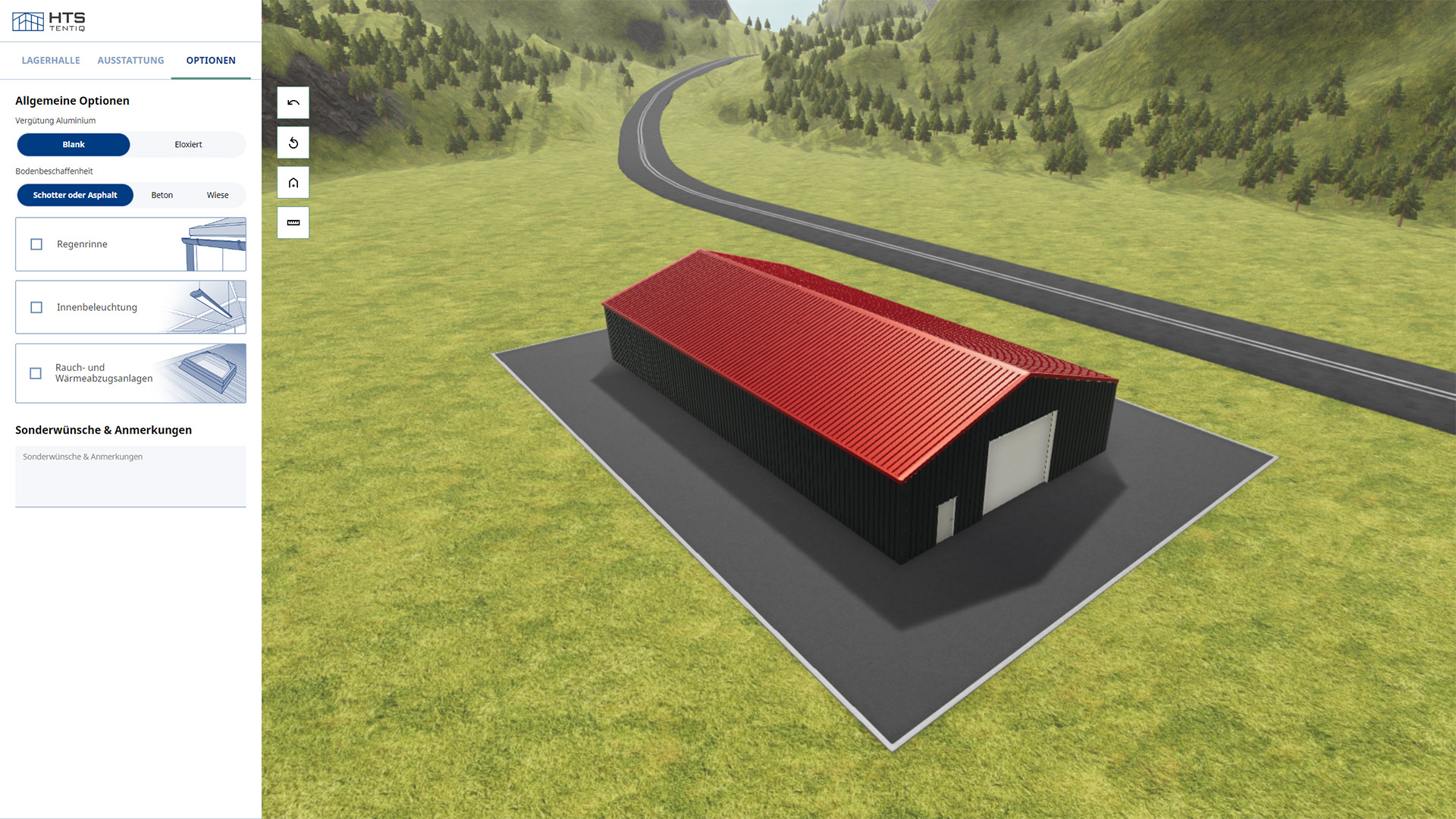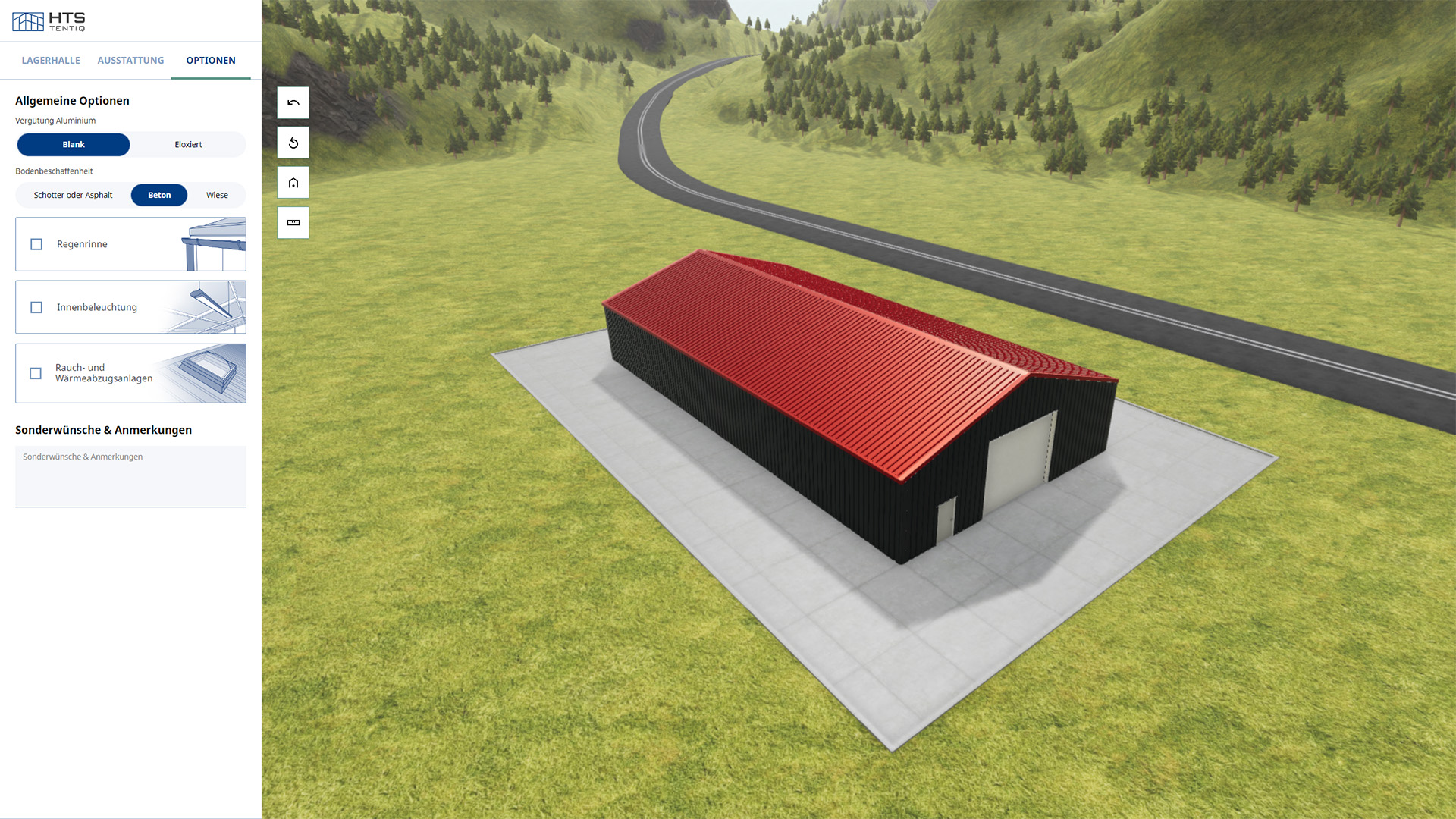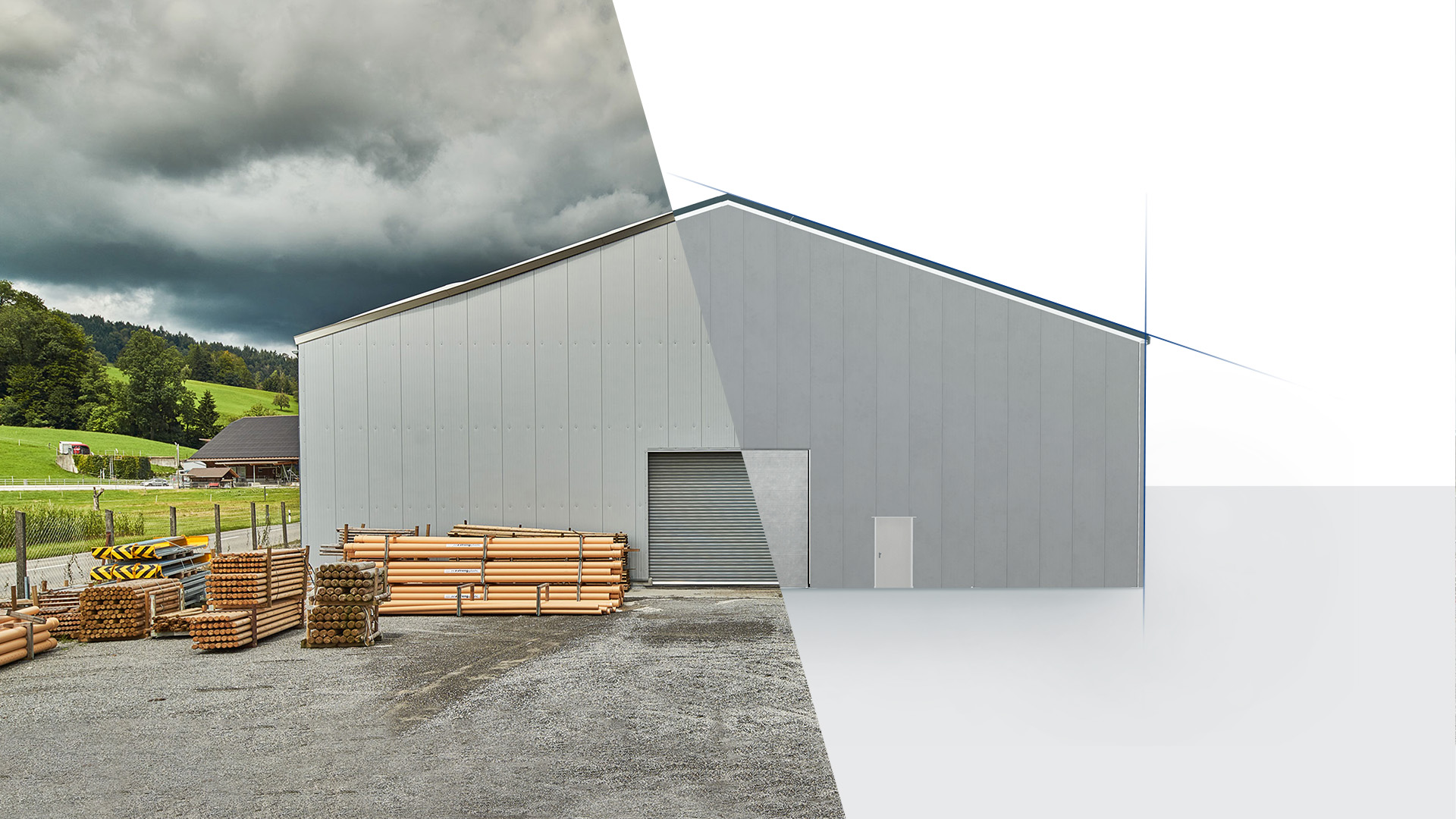
3D Configurator for Tents & Halls
HTS TENTIQ has been manufacturing high-quality tent and hall systems since 2001 and has become a driving force in the industry with its modular buildings. With a weekly production of up to 60,000m² of finished buildings, HTS TENTIQ serves the private, industrial and public sectors worldwide. With the 3D configurator developed by redPlant, these modular buildings can now be planned interactively, simplifying and accelerating the process from quotation to finished construction.
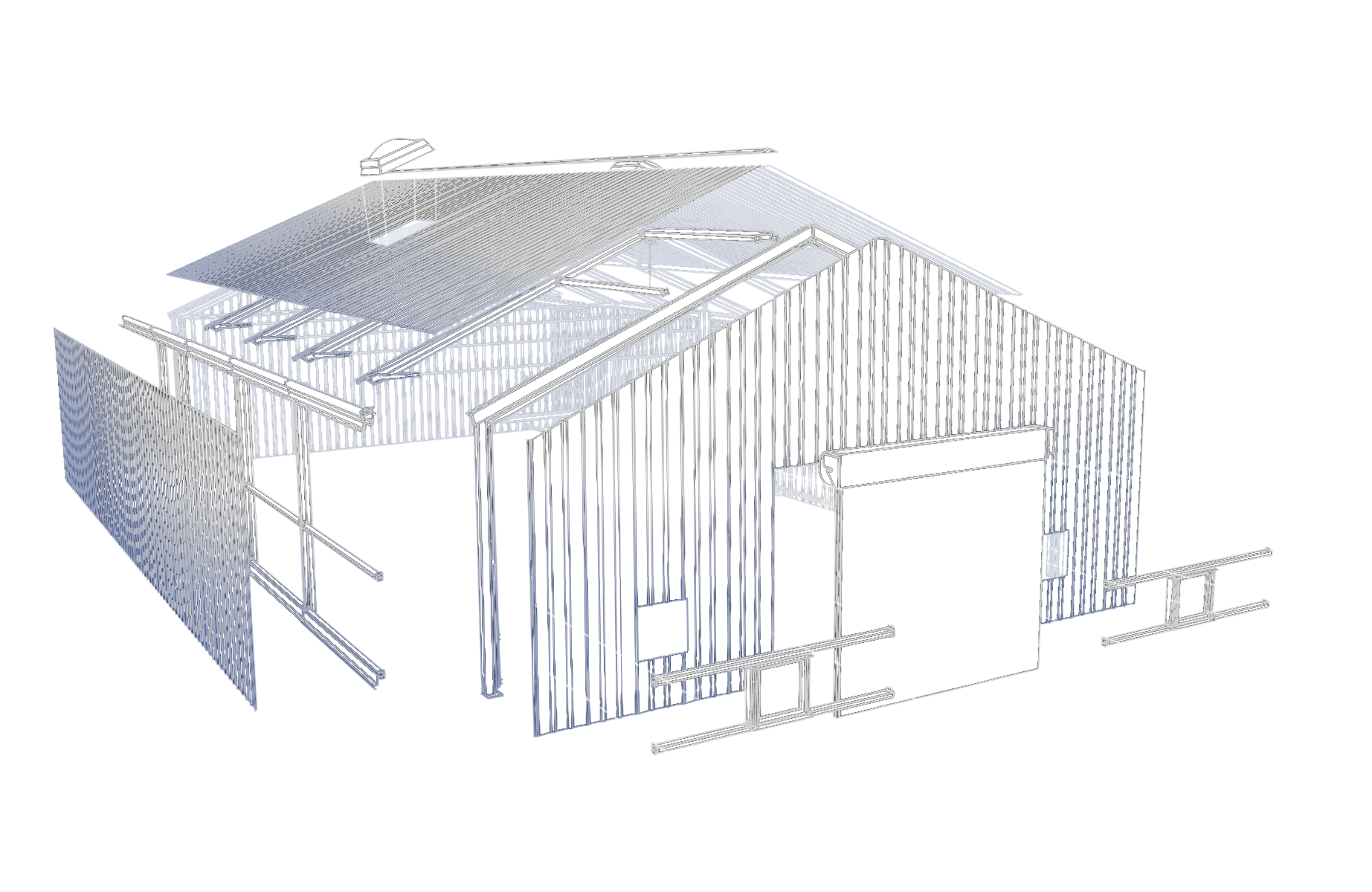
From planning ...
HTS TENTIQ distributes its tent and hall systems in the event, hotel, sports and military sectors, as well as to humanitarian organizations and manufacturing industries. Until now, the planning of these modular buildings was a matter for experts. Due to the complexity, a fixed composition was difficult and required a lot of experience and expertise from the planner. The intended goal of the HTS TENTIQ 3D Configurator is to enable HTS TENTIQ customers to plan all tents & halls interactively via the website and also to actively support HTS TENTIQ employees in the internal processing of requests.

... until delivery
Thanks to the interconnectedness of various tools & services, not only the interactive planning but also the optimal preparation and distribution of data for all subsequent operational processes is made possible. In the course of the development of the 3D configurator, not only were all the possibilities of the systems transferred into configuration options, but tents and halls were also standardized to such an extent that individual planning is still possible, while still being able to transmit the current configuration to sales all the way to production directly via SAP in a form that can be produced.
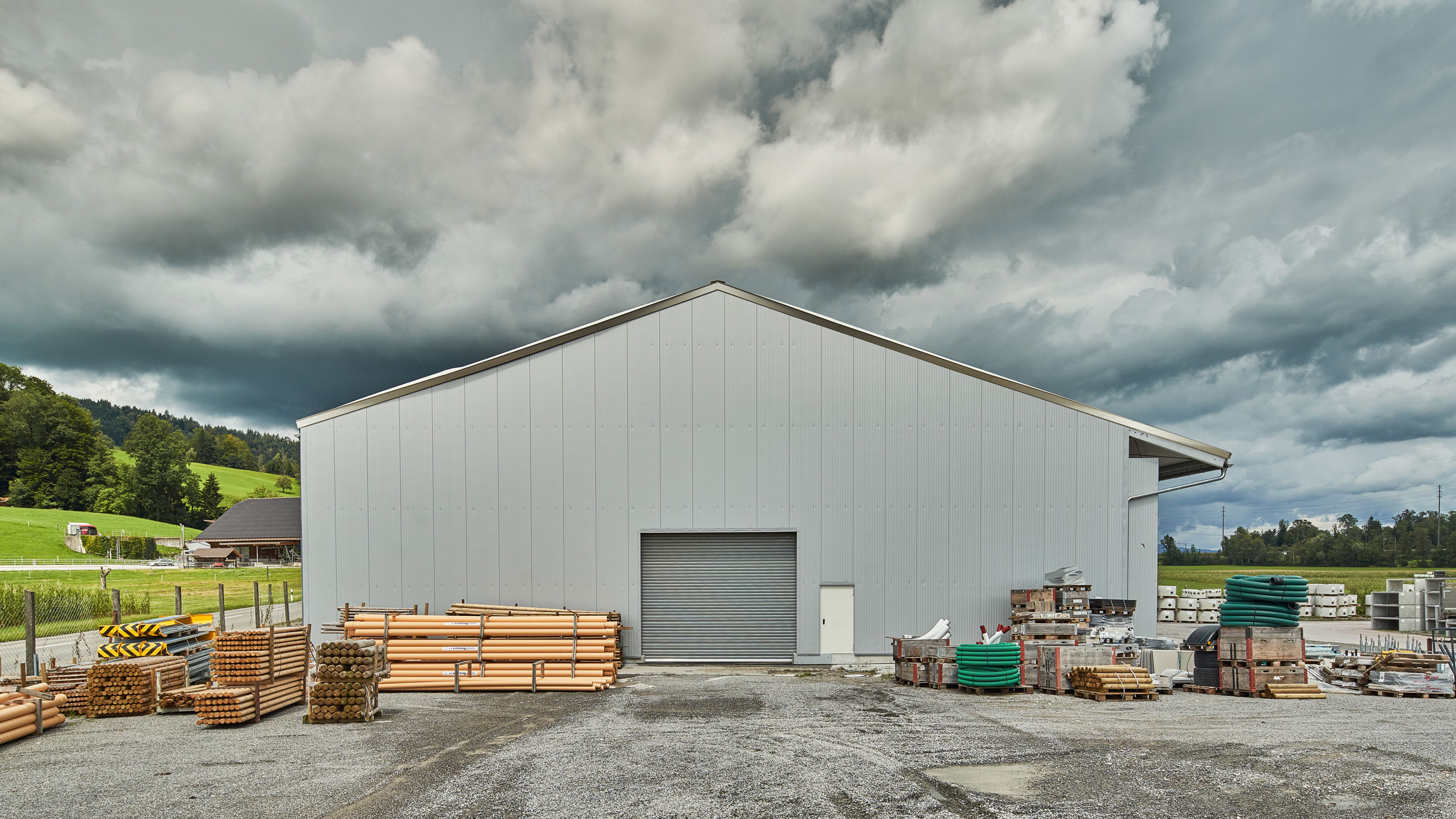
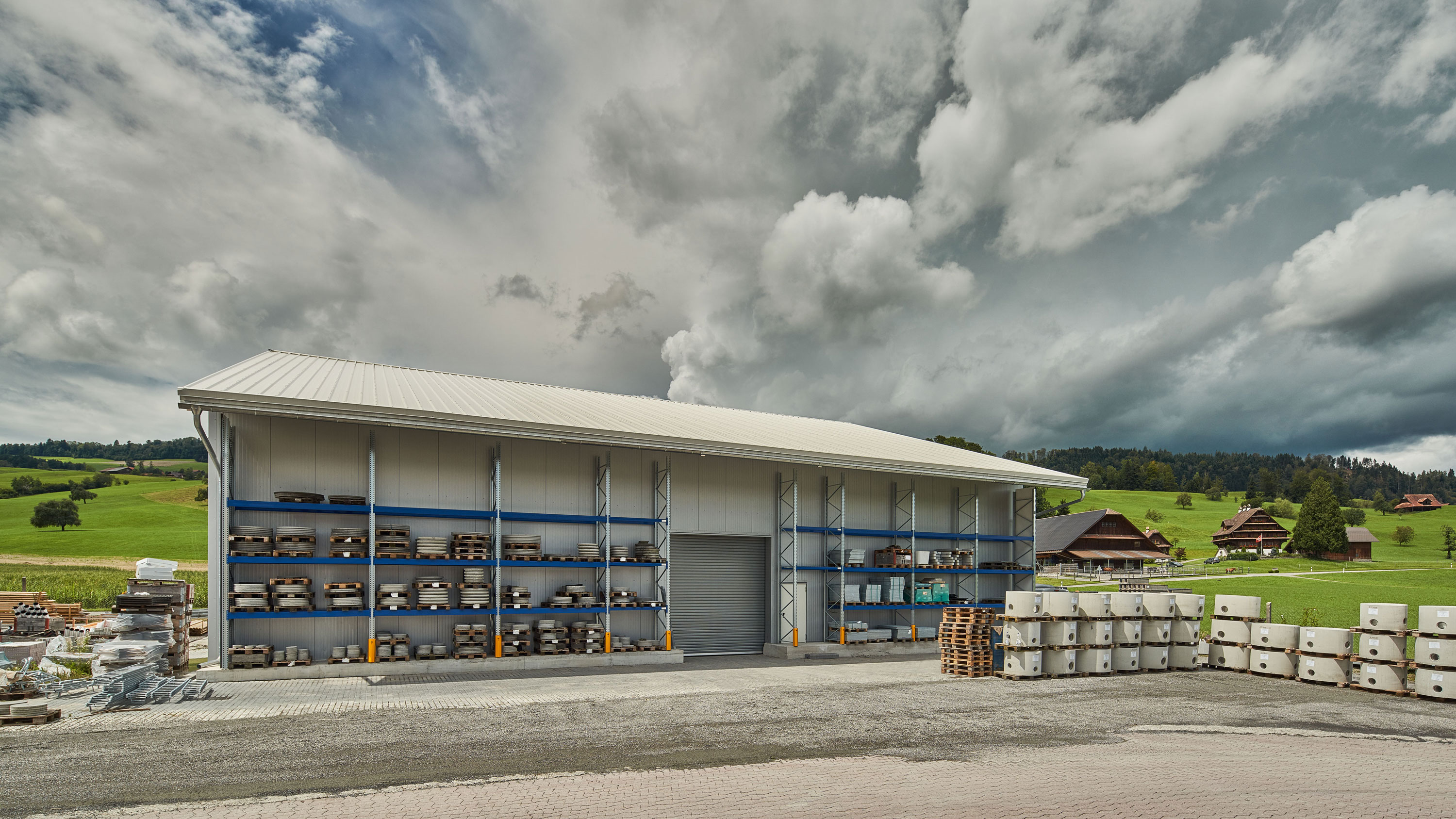
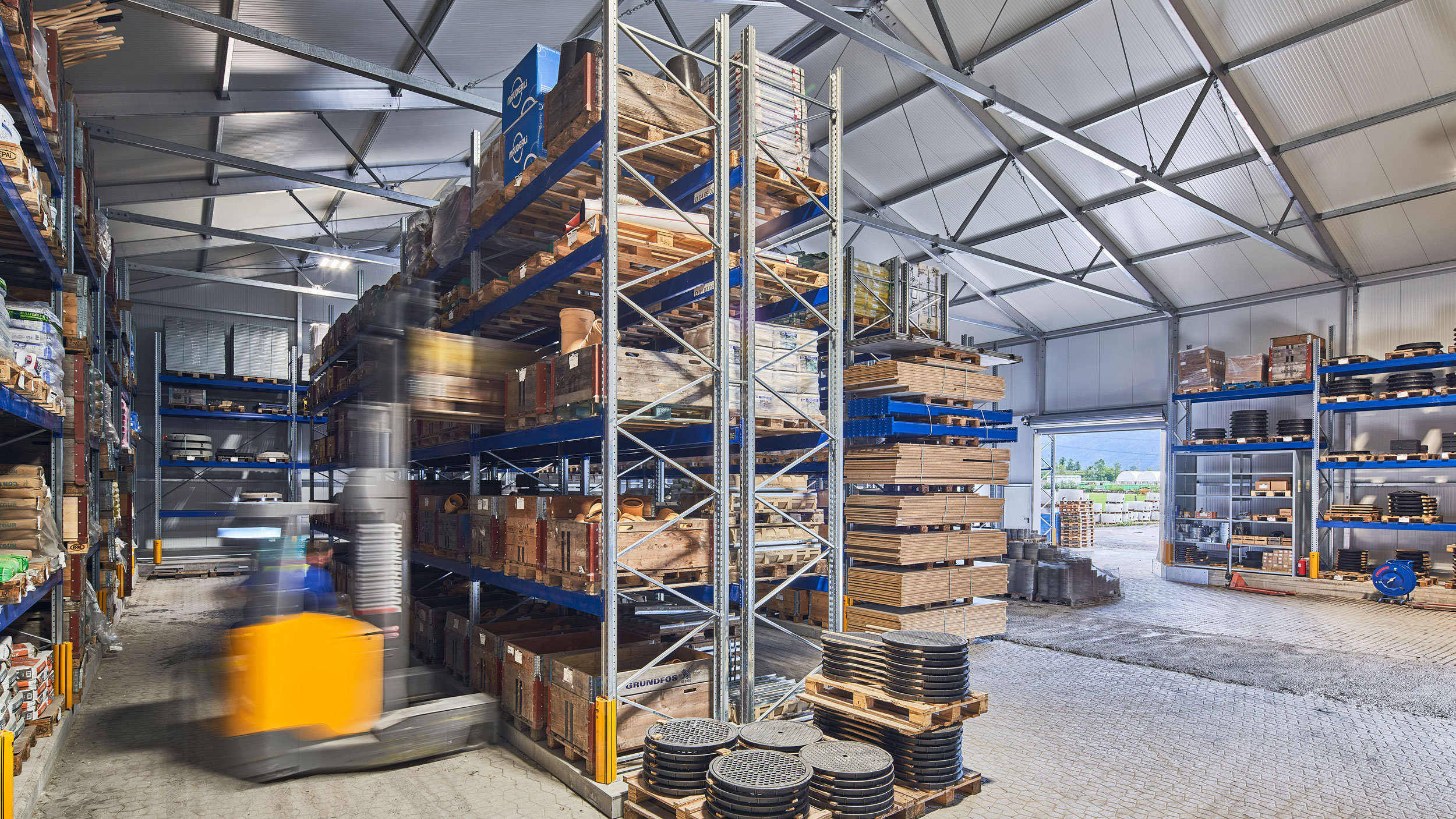
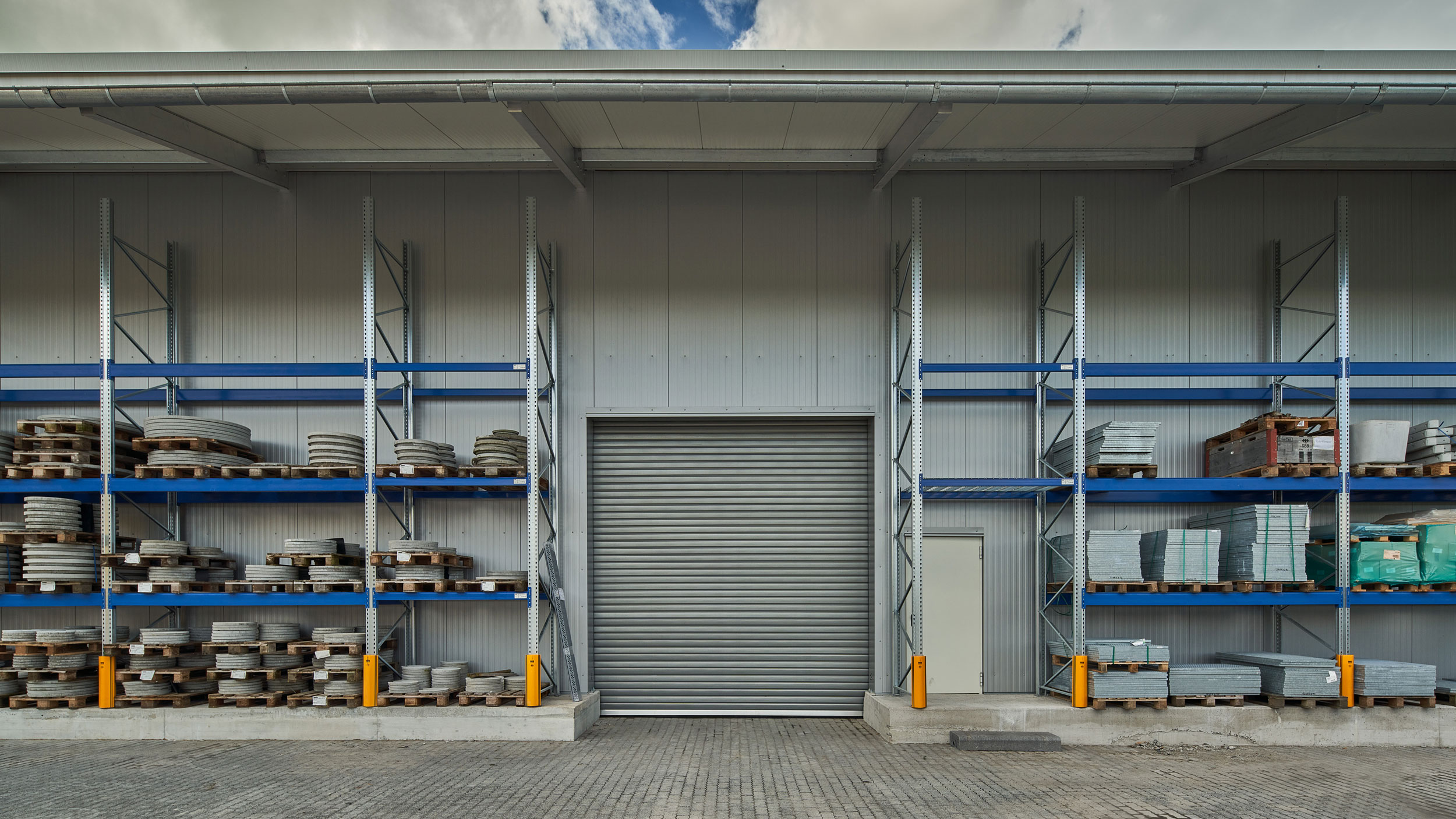
All tent models under control
All tent and hall systems from HTS TENTIQ have a modular structure and are made up of so-called assemblies. The scheme of these assemblies and their fundamental basic set of rules is identical across all tent and hall models and describes a kind of construction kit, whose characteristics and detailed configuration can be completely different. If one system offers clear specifications as to which configuration options and assemblies change with each other, the other system gives every freedom in design.
All beginnings are easy
For a quick start in planning, the HTS TENTIQ 3D Configurator offers you various presets, i.e. pre-configured buildings. These make it easier for you to get started with your individual planning and already show you some of the numerous equipment options. In the next step, you adapt this preconfiguration to your wishes and requirements.
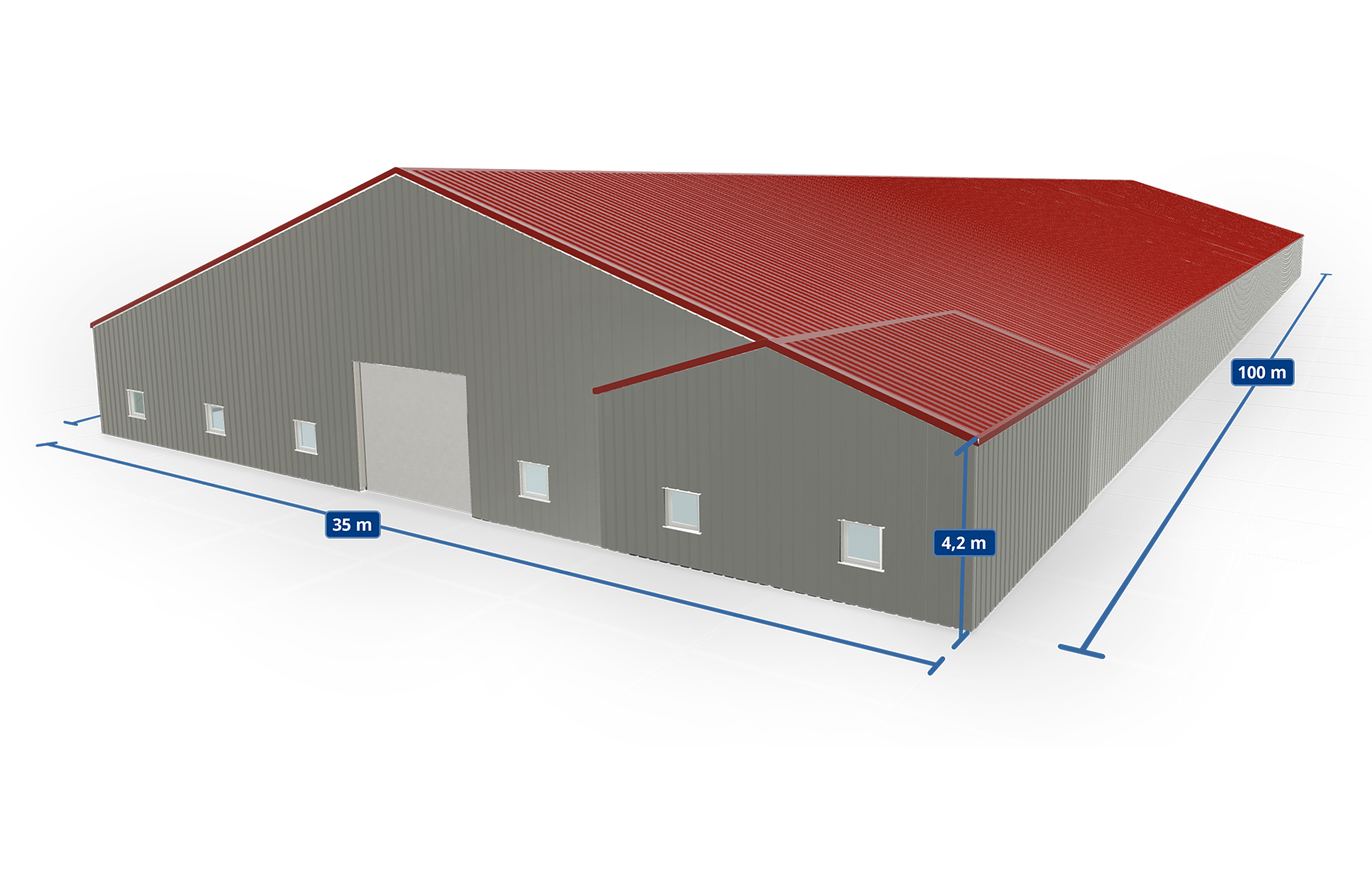
Space for your ideas
From a small party tent on a few square meters up to a 3,500 m² warehouse. Both width and depth can be changed in reasonable steps. In addition, you are offered different heights so that everything from forklifts to jumbo jets fit into your individual and modular tent or hall system.
Accurate to the cm
To ensure that you have all the important dimensions at your fingertips during configuration, a dimensioning system was integrated into the 3D configurator in 2022. Due to the true-to-scale reconstruction of the tent or hall system, not only the dimensions you specified can be displayed, but also the resulting dimensions like the exact gable height can be calculated and shown directly on the 3D model.
From light to highly insulated
The 3D configurator offers you various materials for roof and wall cladding. You will also be given various tips on which materials should be combined with each other. Each material - whether plastic, aluminium or steel - is available in different colors and comes with additional detail configurations.
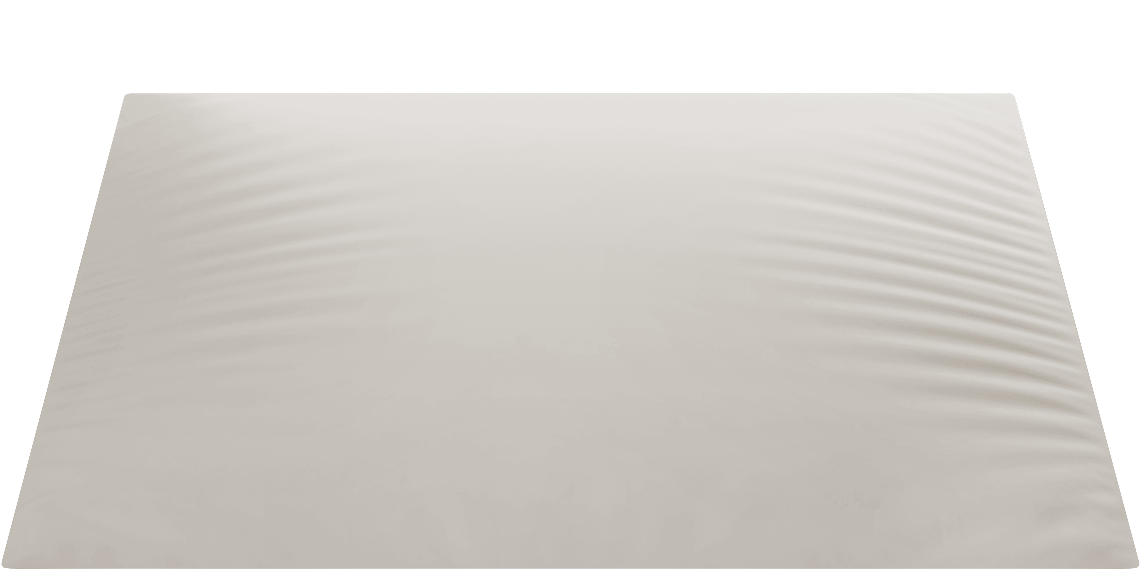
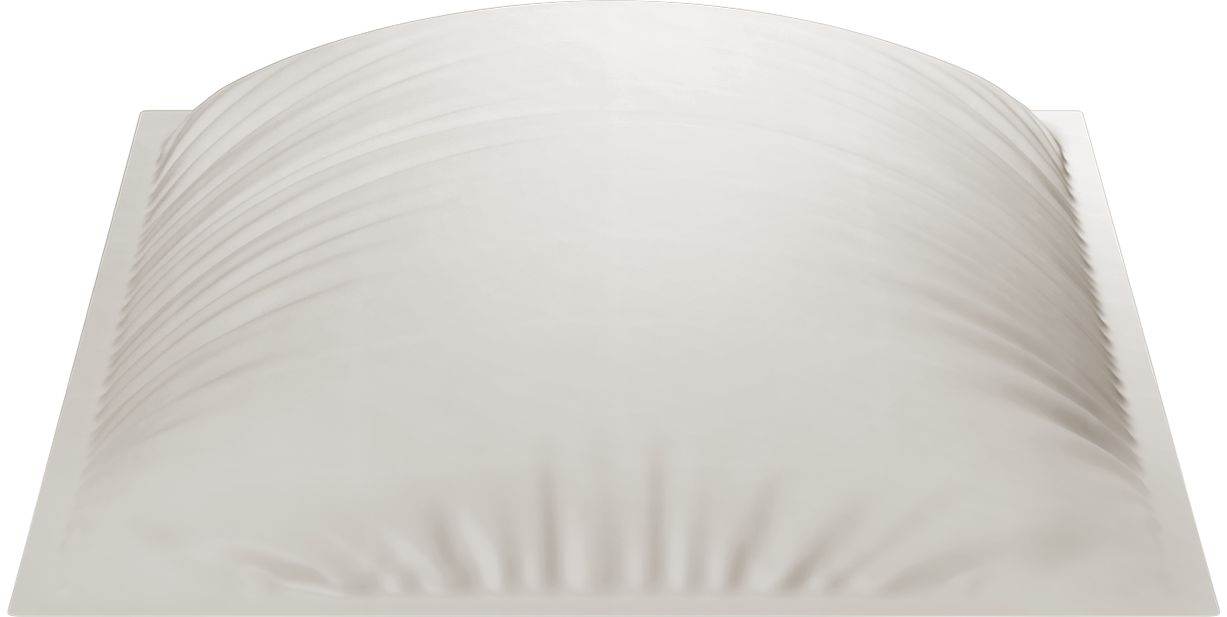
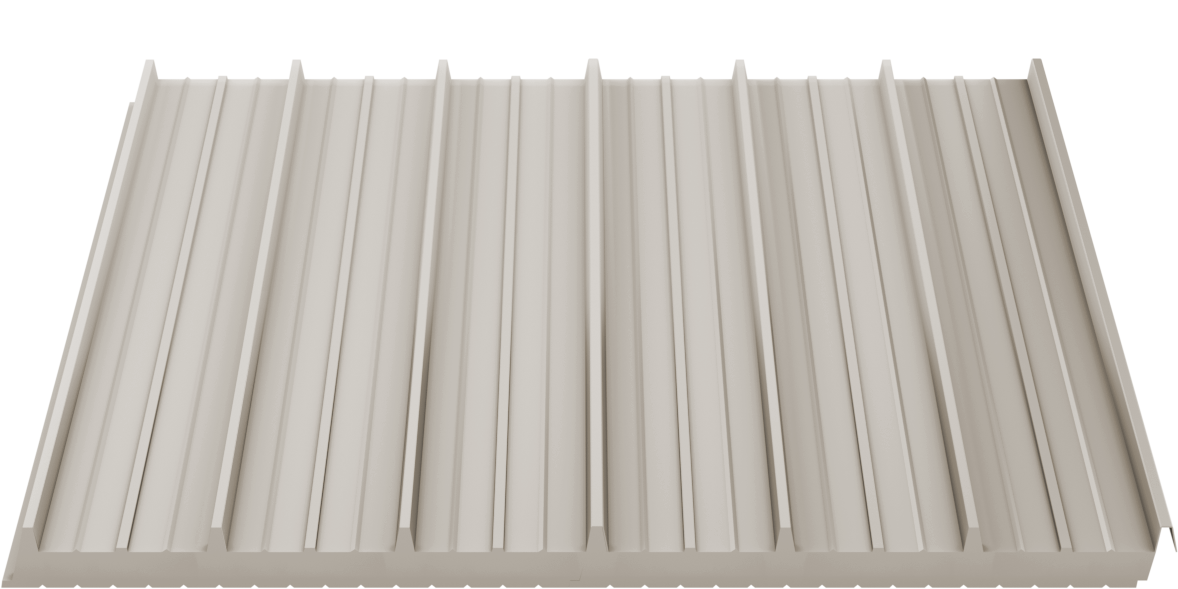

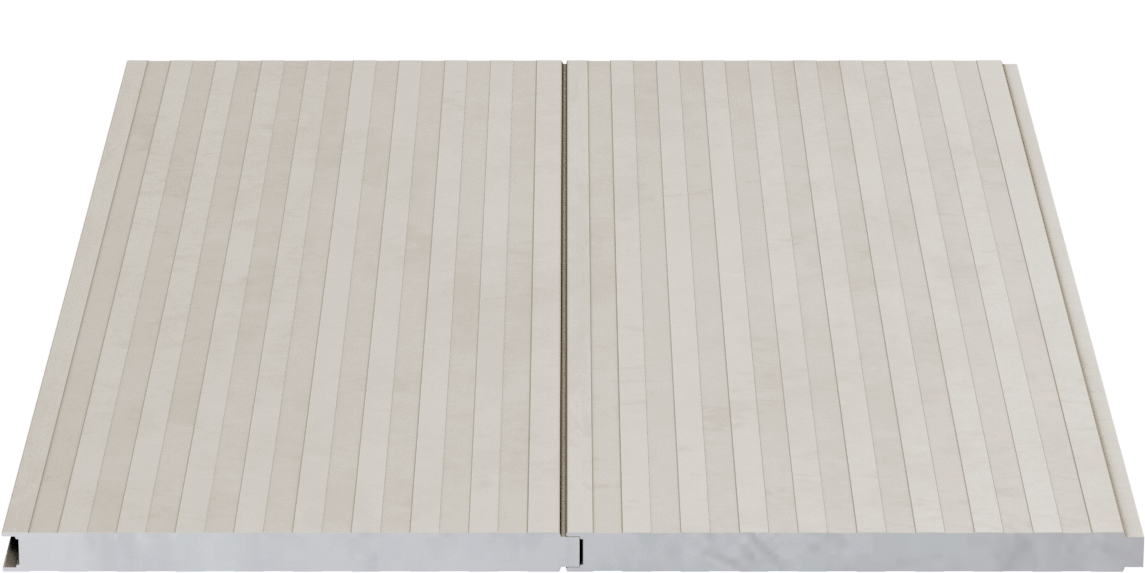
From uniform to highly individual
Depending on the tent or hall system, it is possible for you to choose different equipment in different materials and colors for each wall segment. In addition to windows, doors and gates, there is a lot more available to you. Depending on the equipment and system, you can also choose from options such as single and double doors, single- to four-part windows and various types of gates.
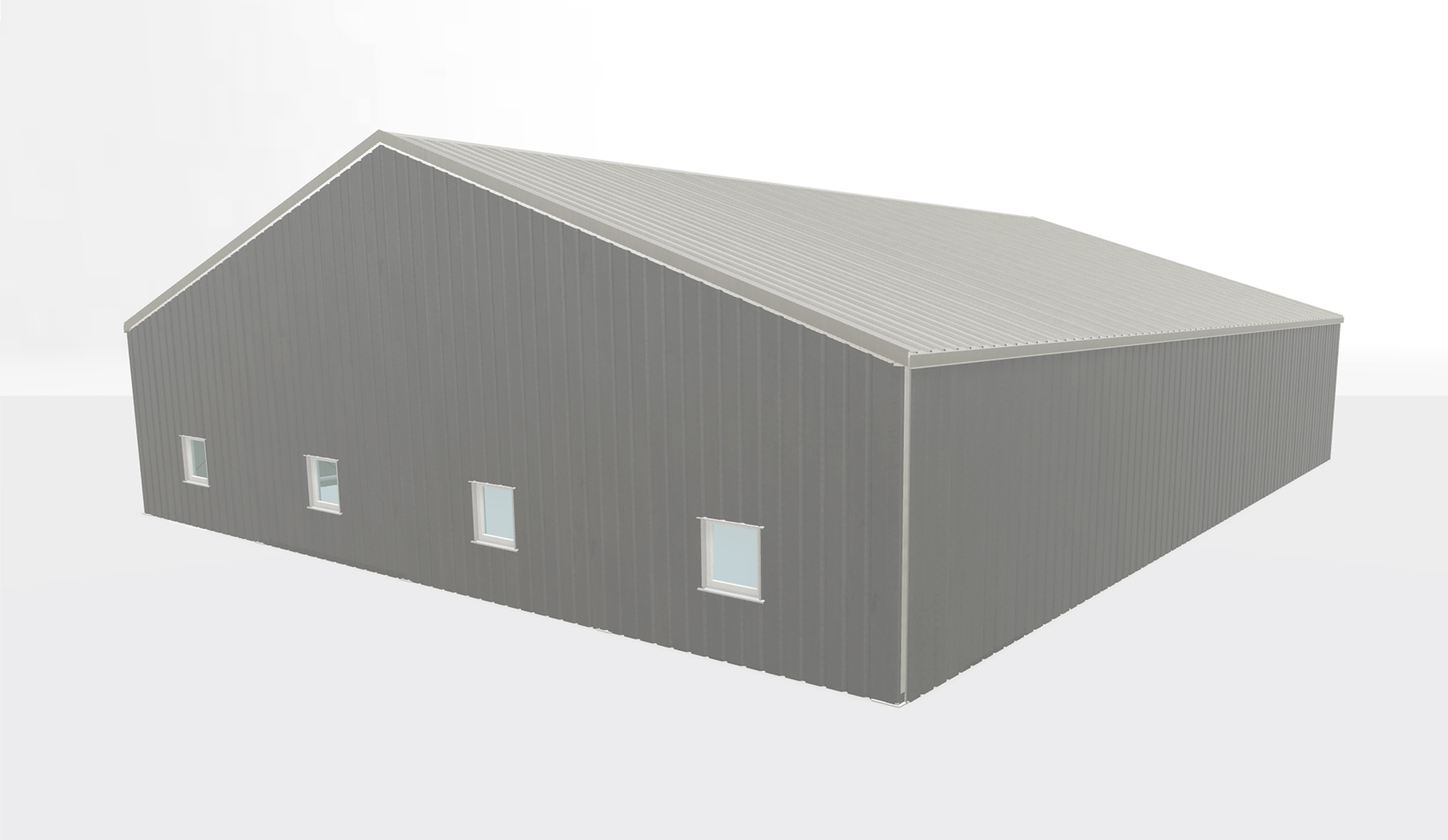
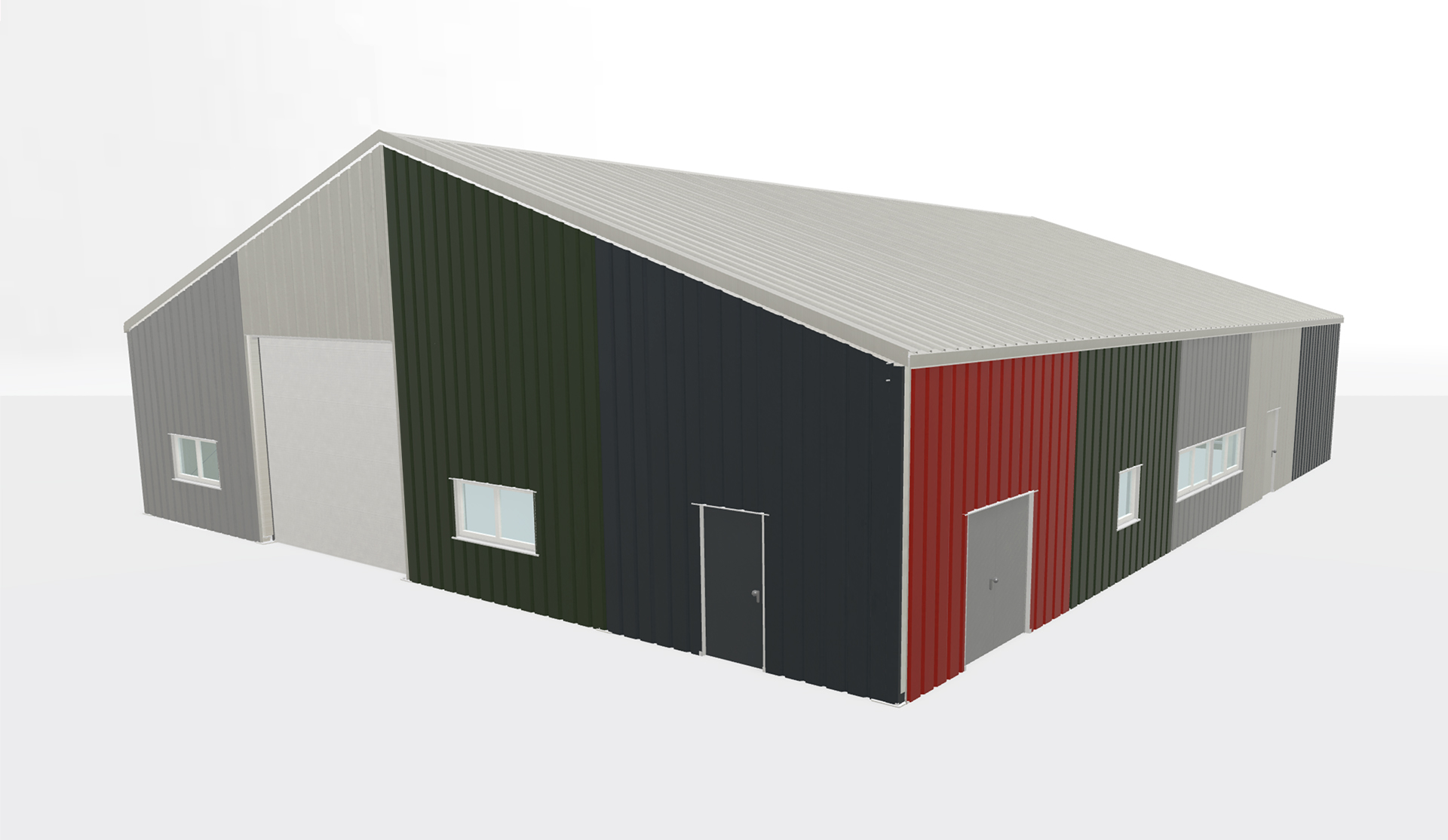
Putting the finishing touches
But it doesn't end with the planning of the wall equipment. You can choose from a wide range of other equipment that can enhance or optimize the appearance and function of your planned building.
Internal roof covers
Tarpaulins inserted from the inside of the roof to collect and drain condensation.
Indoor Lighting
Rooflights are used for natural lighting of the interior of the building.
Rooflight
Rooflights are used for natural lighting of the interior of the building.
Rain gutter
Length of the system and number of rain gutters are calculated based on the length of the building.
Ground-rail
Used for weighing down wall covers for a wind-resistant wall covering.
Rafter flaps
Covering exposed spars on the outside of the roof to protect them.
Anti-condensation coating
Coating on the inside of a roof cover to absorb condensation.
Smoke and heat ventilation systems
Smoke and heat ventilation systems are calculated based on the volume and visualized on the roof.

The perfect backdrop for your hall
To optimally showcase the HTS TENTIQ tent and hall systems as well as their materials, the simple surrounding scene was expanded in 2023 with two spacious 3D scenes. In addition to the neutral studio scene, you can now plan your hall in an idyllic, lush green mountain landscape or in a modern, sterile industrial look. Particle effects and special shaders were used for the efficient and automatic distribution of vegetation. Additionally, a randomized cloud and fog simulation ensures that the environment appears even more lively.
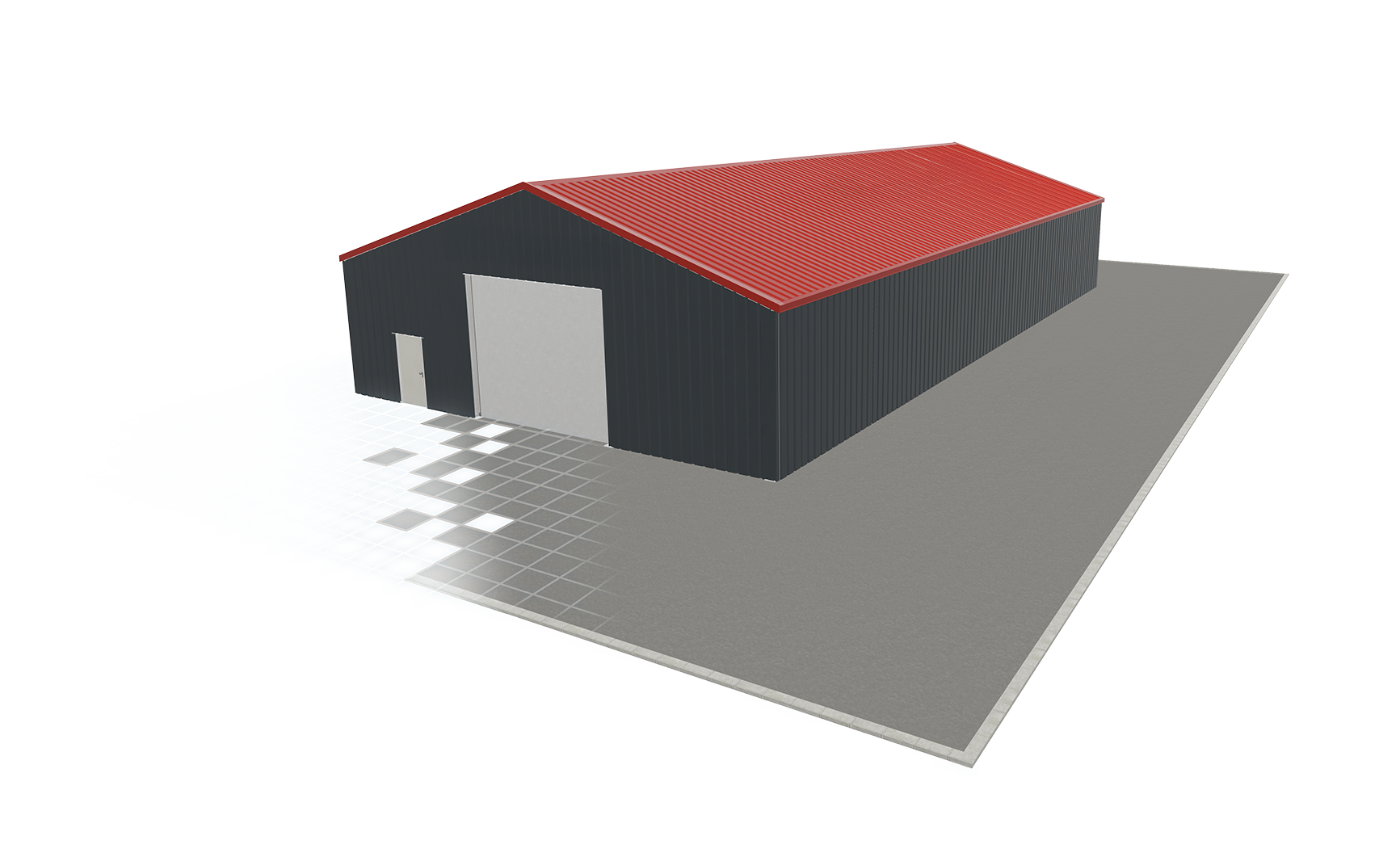
What are you standing on?
In the course of the integration of the 3D environment, the option of the ground texture was also visualized in 2022. Depending on which ground you choose, not only the construction of the tent and hall system is now adjusted, but also the selected ground condition is visualized directly below it. For this purpose, the subsoil of the tent was parameterized so that different sizes of the tent model can be addressed here as well.
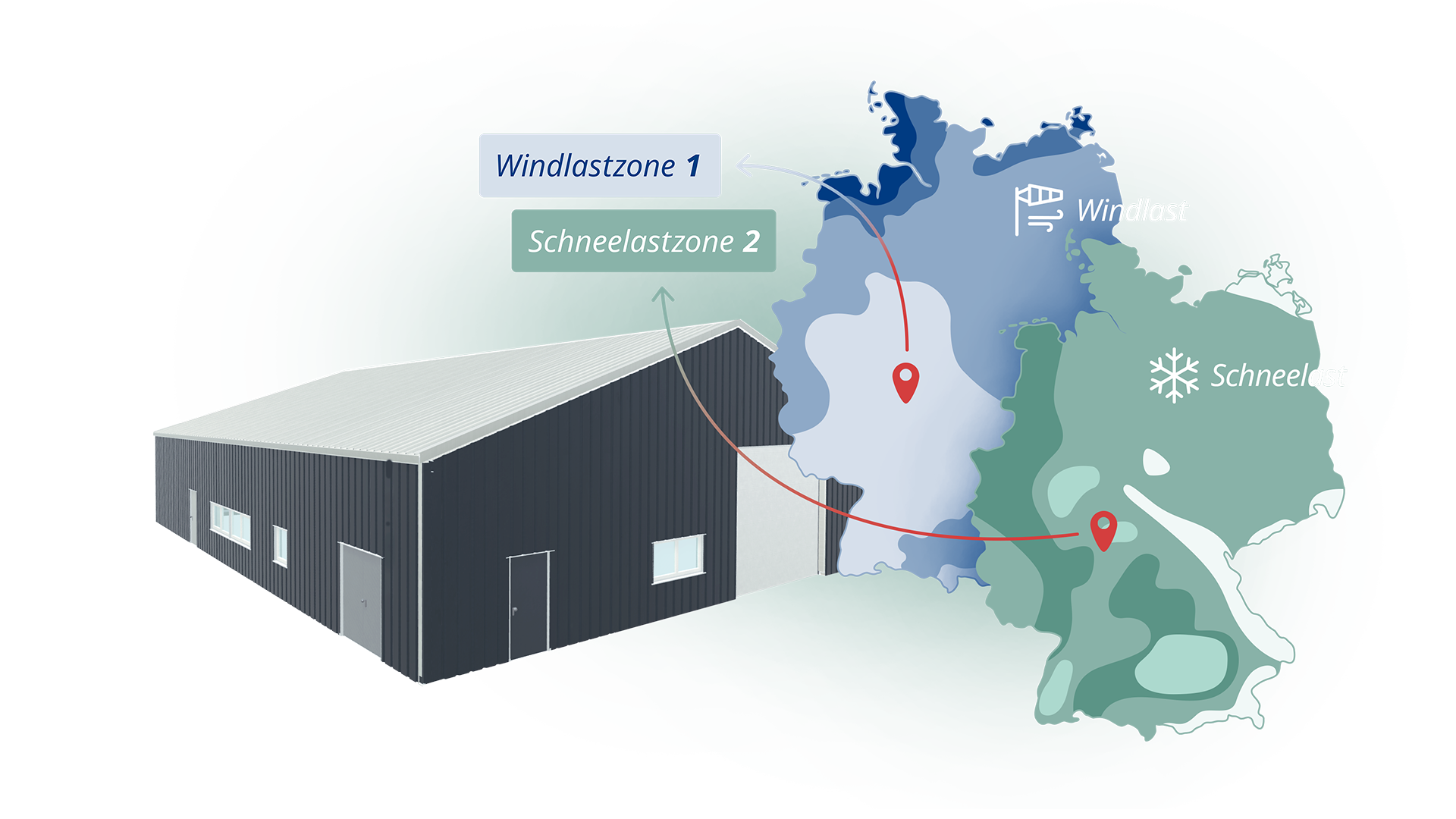
Permanent or temporary construction?
The information and calculations in the 3D configurator were previously based on the assumption that the tent would be built temporarily, as a mobile structure. In 2024, the permanent construction type was also taken into account. Unlike the previous mobile structure, this allows the planning of tents that can remain in place after construction. For permanent construction, details regarding wind and snow load are required, as well as whether a photovoltaic system should be installed.
Always safe!
Each configuration is checked in real time not only for plausibility in production, but also for areas such as ease of operation. For example, if a door is placed to the right of a gate, the motor of the gate automatically switches to the right side so that the gate can be operated from the door.
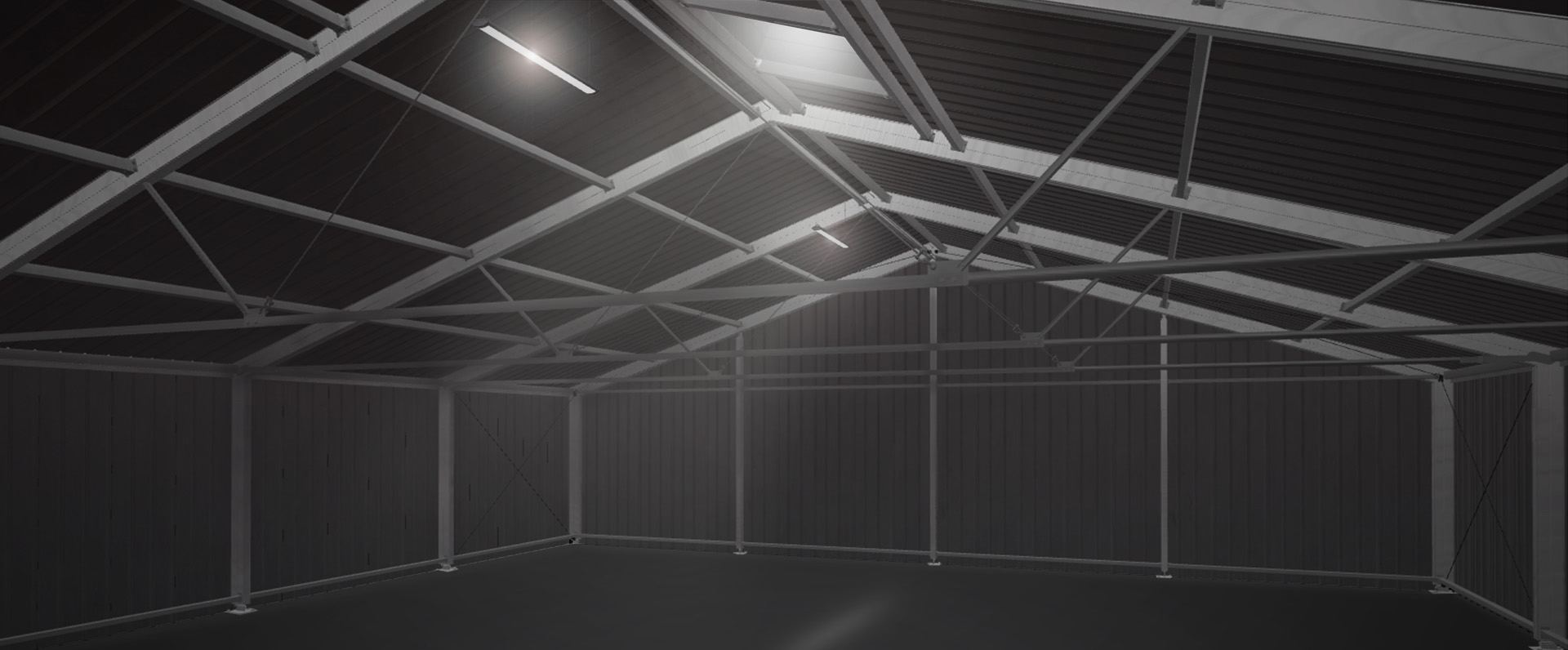
It's the inner values that count
You would like to see the inside of your tent or hall system before it is built? Your wish is granted. The 3D configurator offers you to change to the interior view. Here you can take a look at the inner values of your tent or hall system, because not only the configuration options such as the interior lighting, but also the construction including the profiles, struts and reinforcements have been reproduced true to scale and true to the originals.
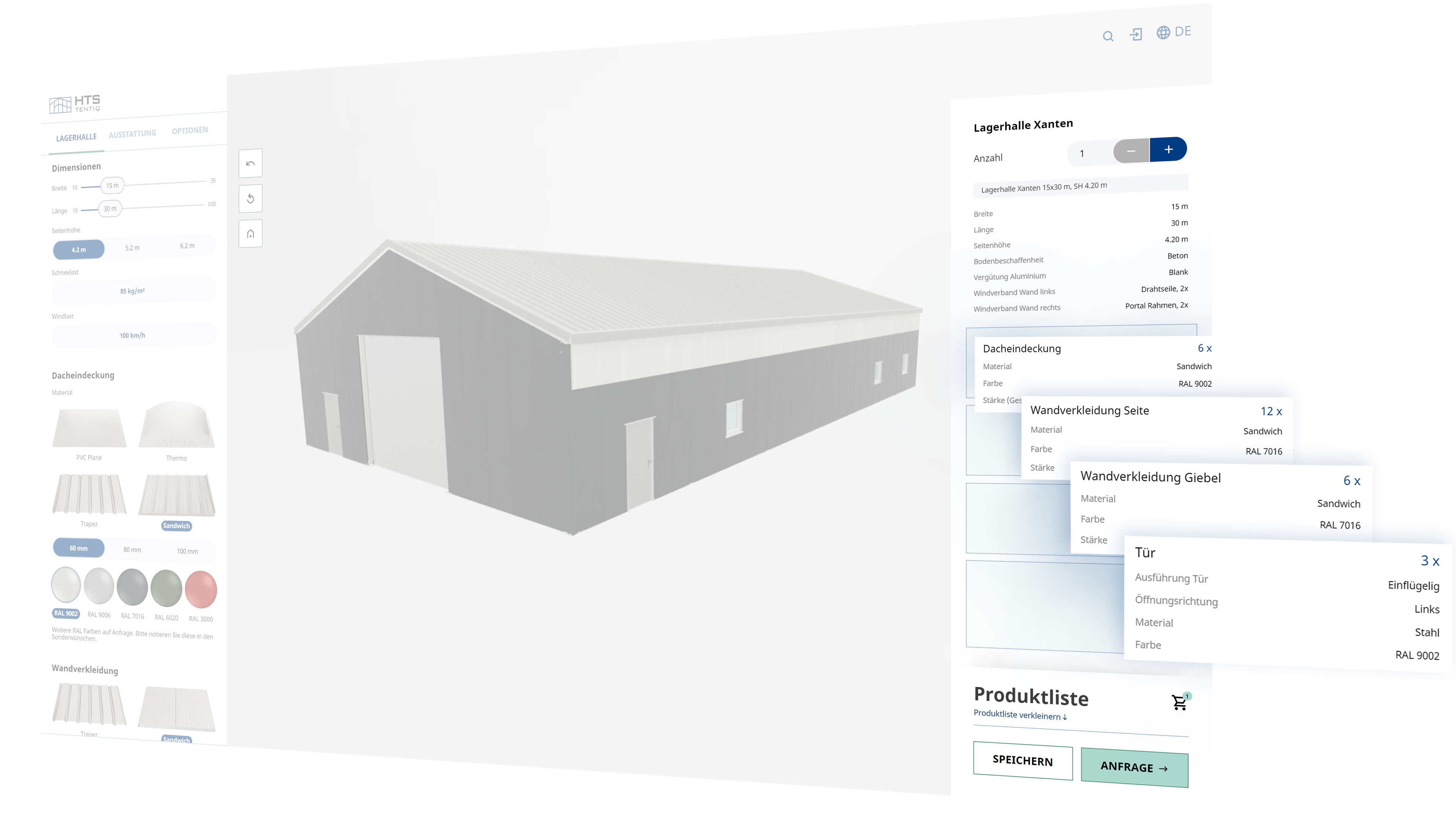
One step closer to your goal with every click
During the entire configuration process, all configuration options and features are immediately translated into articles and assemblies and a parts list of your configuration is compiled.

Misclicked?
One click too much or simply misconfigured? Then you can use the undo functionality of the 3D configurator. Simply go back one or more steps.
Responsive Design
Whether you're at the construction site, on your way there or in the office – the Responsive Web Design allows you to use the 3D configurator on almost any device. The user interface adapts perfectly even on small devices and thus offers easy and comfortable planning, no matter when and where you feel like it.
Finished configuring - and then?
If you are satisfied with the design of your modular building, you can request it directly via the 3D configurator. All you have to do is enter your contact details and HTS TENTIQ will receive your request including your detailed configuration. For this purpose, the configuration is saved with an ID, with which the configuration can be called up again at any time.

Nothing gets lost!
If you are not 100% sure, you can save your configuration at any time and receive an email with a unique link. You can use this link to call up your individual planning in the 3D configurator again at any time and then, if you are sure, also request it directly.

And taken instantly
Since 2023, individual configurations can not only be saved but also downloaded as a 3D model in glTF format. This 3D model can be reopened and further processed in all common 3D programs. Both the configured product and the materials used are exported accurately. This export function provides HTS TENTIQ with valuable support in planning and sales.

Behind the scenes
For a simple control and visualization of the complexity of the different tent and hall models, some strings were pulled in the background. Our goal is to map the complexity of the configuration in such a way that it is always simple, transparent and performant for the user in the frontend. In the following paragraphs we will give a small insight into the conceptual and technical implementation.
Think big
Based on their almost collective characteristics, the multitude of tent and hall systems have been divided into two major main types. Type A can be extended in two dimensions and type B in only one dimension. For both types, a so-called maximum configuration was created, which represents the configuration options and restrictions of the totality of all associated modular buildings.
Execute in detail
The maximum configuration represents a kind of modular system, with which the individual buildings can be derived and constructed. For this purpose, only certain options of the maximum configuration are made available and these are limited by the restrictions of the corresponding system. In the first version of the configurator, the focus is on the buildings of type B, which are divided into the categories warehouse, party tent and large tent.
Use worldwide
In 2022, the HTS TENTIQ 3D configurator was rolled out worldwide. In addition to more tent and hall models and the integration of different languages, country-specific versions of the tent and hall models were also made available now. For this purpose, the data model was expanded and the derivations were used not only with regard to the actual tent model, but also in respect to the requirements of the respective sales country.
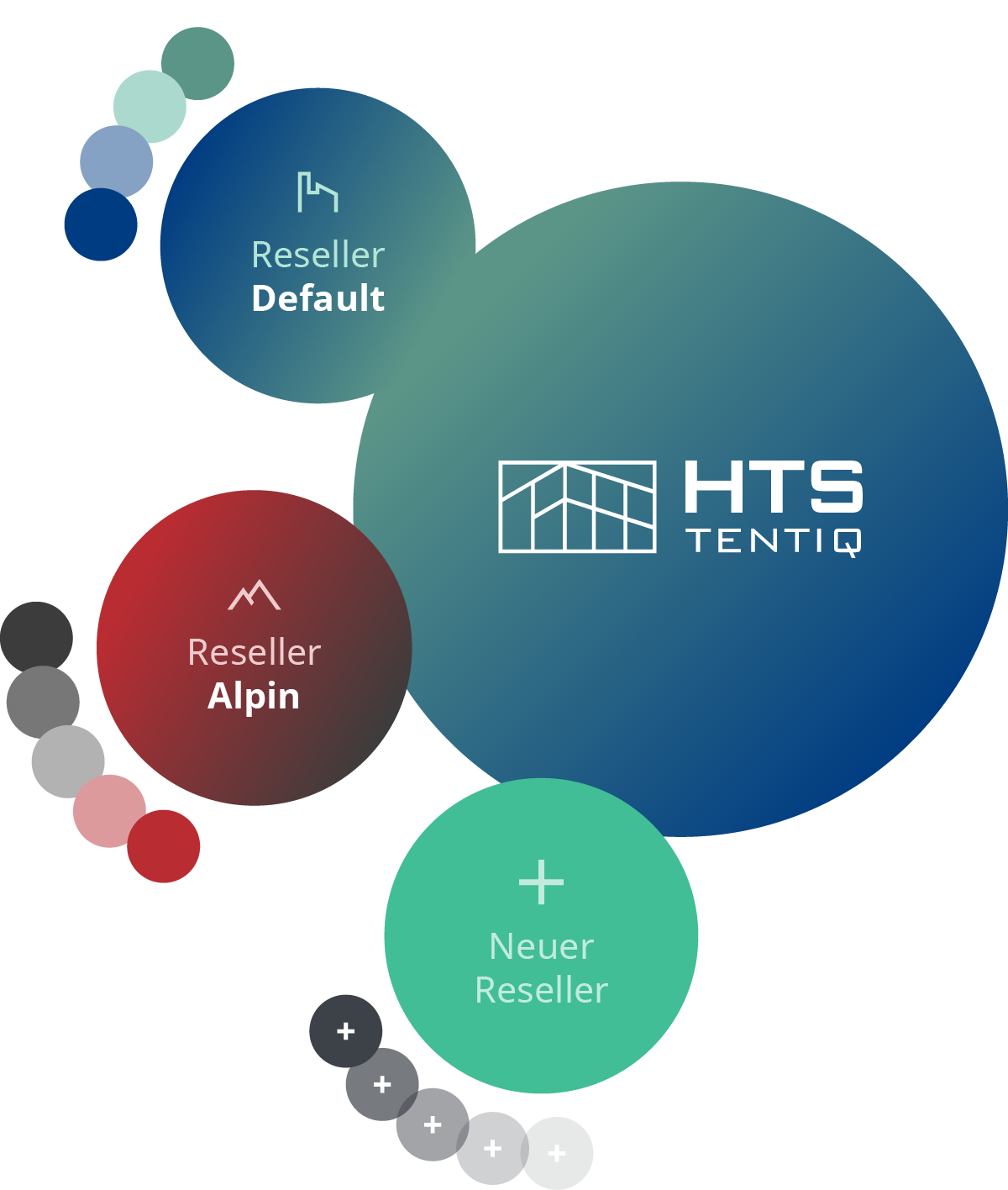
Share with others
In order for HTS TENTIQ to offer the configurator to its resellers, the structures were adjusted in 2023 so that individual versions for the resellers can be provided with minimal effort. Not only was the option created to tailor the user interface precisely to the reseller's branding, but the processes were also aligned accordingly. As a result, the reseller is provided with almost all features of the HTS TENTIQ configurator, but, for example, saving configurations and email sending are managed separately.
Driven by data
The maximum configuration and its derivation describes the individual tent and hall systems using a data model. This is not only used as a kind of blueprint for the construction of the three-dimensional visualization, but at the same time the user interface is built up on the basis of the data, with all possible configuration options, associated tooltips and corresponding notes such as errors and messages. The data-driven structure also enables the derivation into the bill of materials, product list and the derivation into the corresponding assemblies and articles, which are essential for sales and production.
Tooltips
The tooltips associated with the configuration options are delivered based on the state.
Messages
Based on the state or the change of the states, configuration-related messages can be displayed.
BOM
The current parts list from the necessary articles and assemblies is generated immediately.
Undo
For the UNDO functionality, a list of changes to the state is provided.
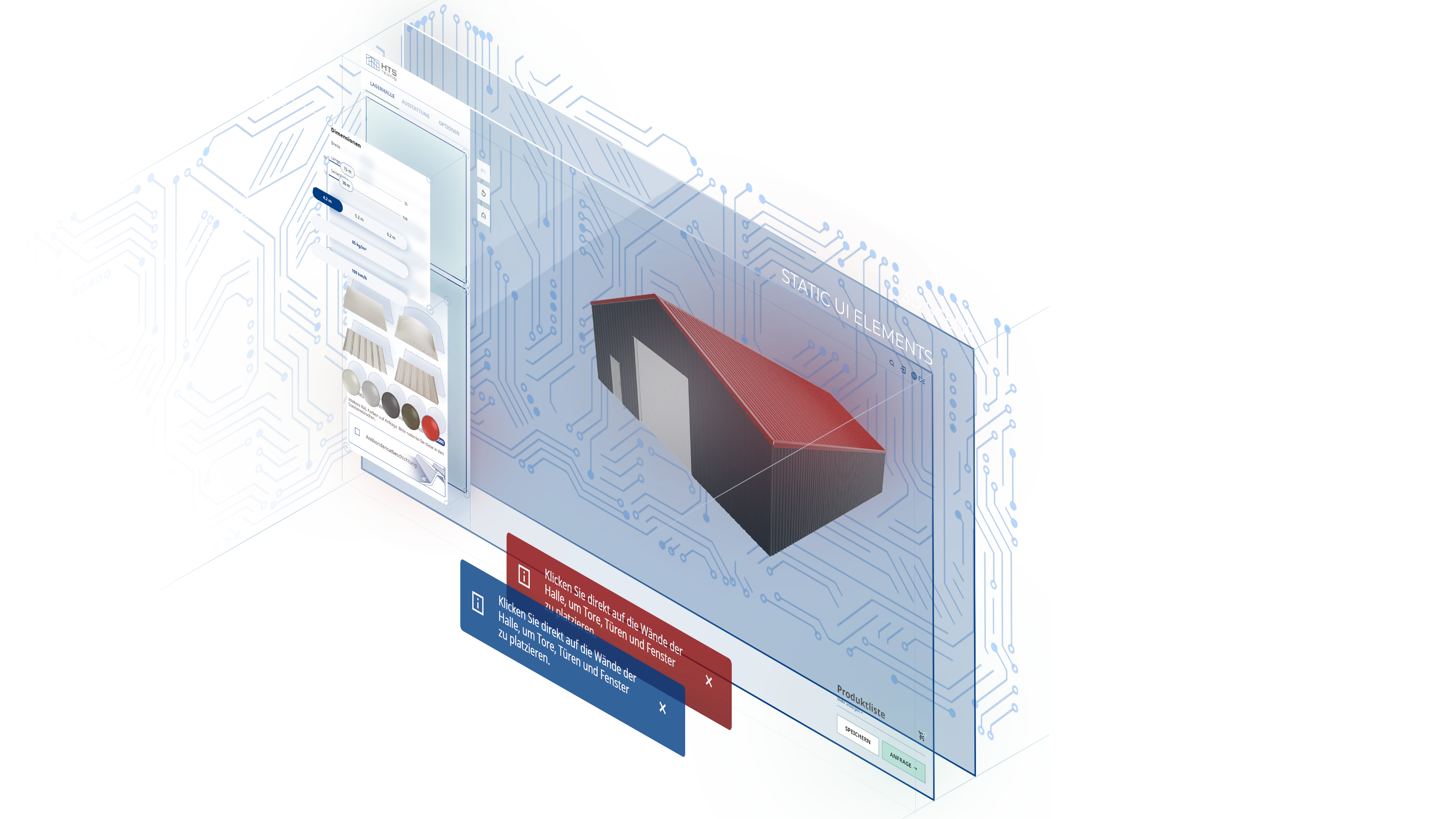
Data-driven User Interface
From the pool of all possibilities of the maximum configuration, exactly those UI elements are used and combined that are necessary for a specific tent or hall system. This keeps the user interface clear and compact. Since the entire logic of the configurator is controlled by the data model located in the backend, both the user interface and the 3D scene in the frontend do not need to hold much knowledge. This means that new systems can be integrated quickly and easily.
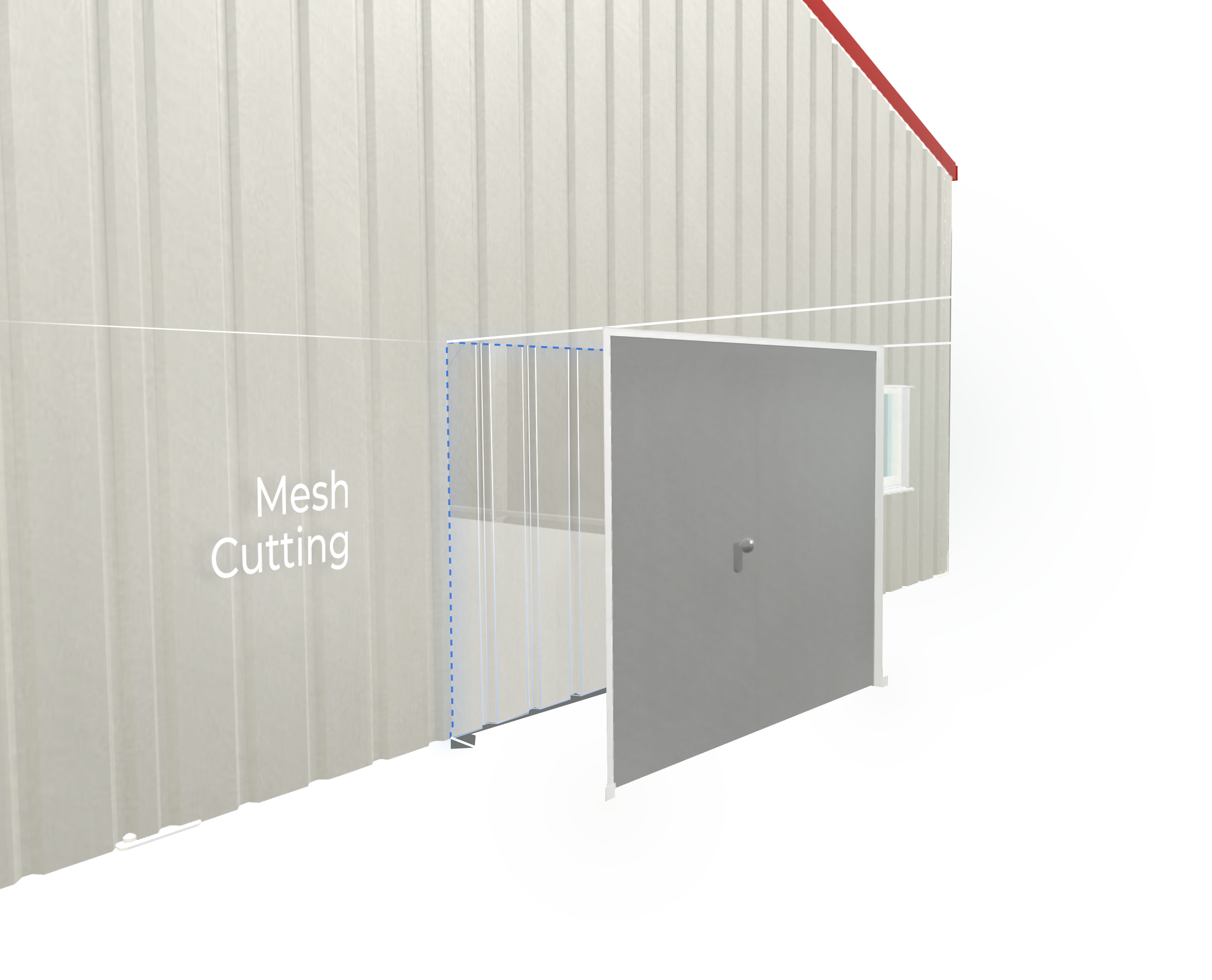
Variety yes, lots of data no
To keep the amount of 3D data as small as possible, the cutouts in the walls for doors, windows and gates are cut into the mesh in real time. Otherwise, a separate 3D model would have to be prepared for each possible combination of equipment and wall element and integrated into the 3D configurator. This would significantly increase the loading times of the configurator, for example.
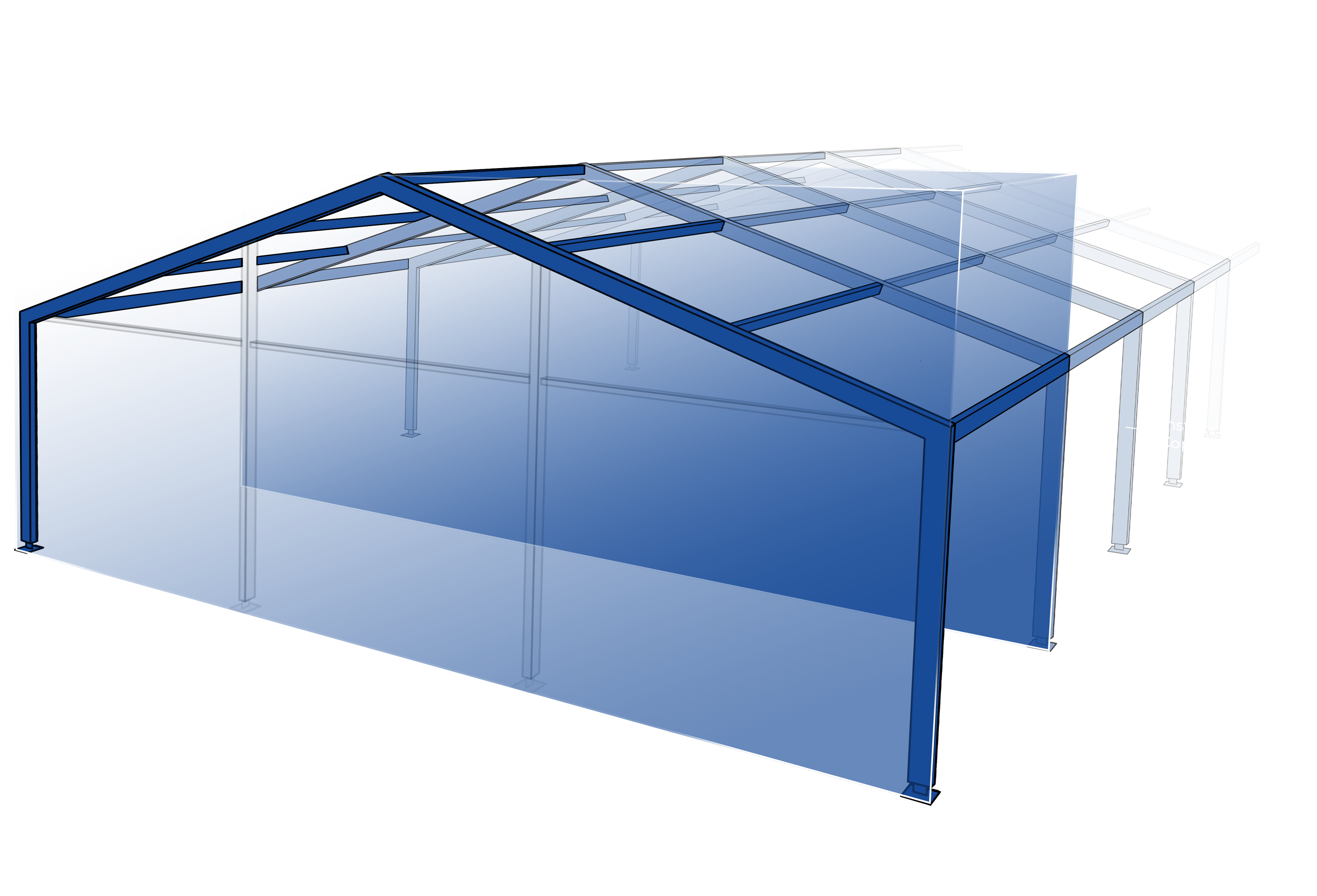
More is less
To guarantee good performance of the 3D configurator even when assembling large tents, the 3D configurator uses GPU Instancing. This means that a 3D model used several times in the scene is loaded only once and copies of it are used again and again. This is particularly useful for repetitive elements such as struts or wall panels.
Internal mode
Until now, the 3D configurator was mainly provided for end customers and used by them. Since 2024, it is also available to HTS TENTIQ employees in the internal area. There, they benefit from an expanded range of features and can log in directly via their employee accounts.
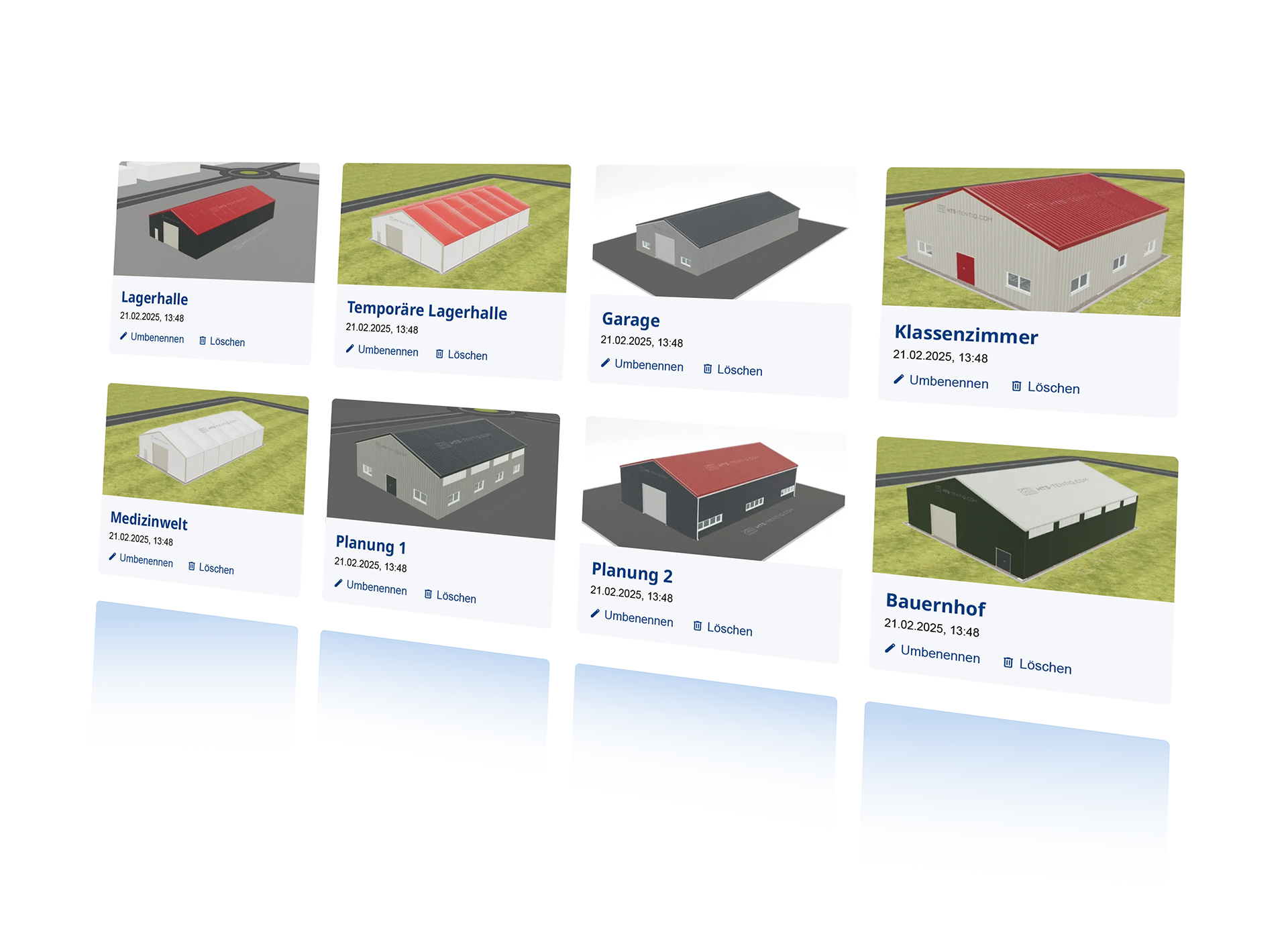
Planning
Through the internal area, it is now possible to save plans and name them individually. A plan is not a single unique configuration, but rather the history of many saved configurations and serves the direct consultation with the customer. The key feature is: The customer always accesses the same plan, but the stored unique configuration can change. This allows the HTS TENTIQ consultant to gradually adjust the configuration to the customer's wishes.
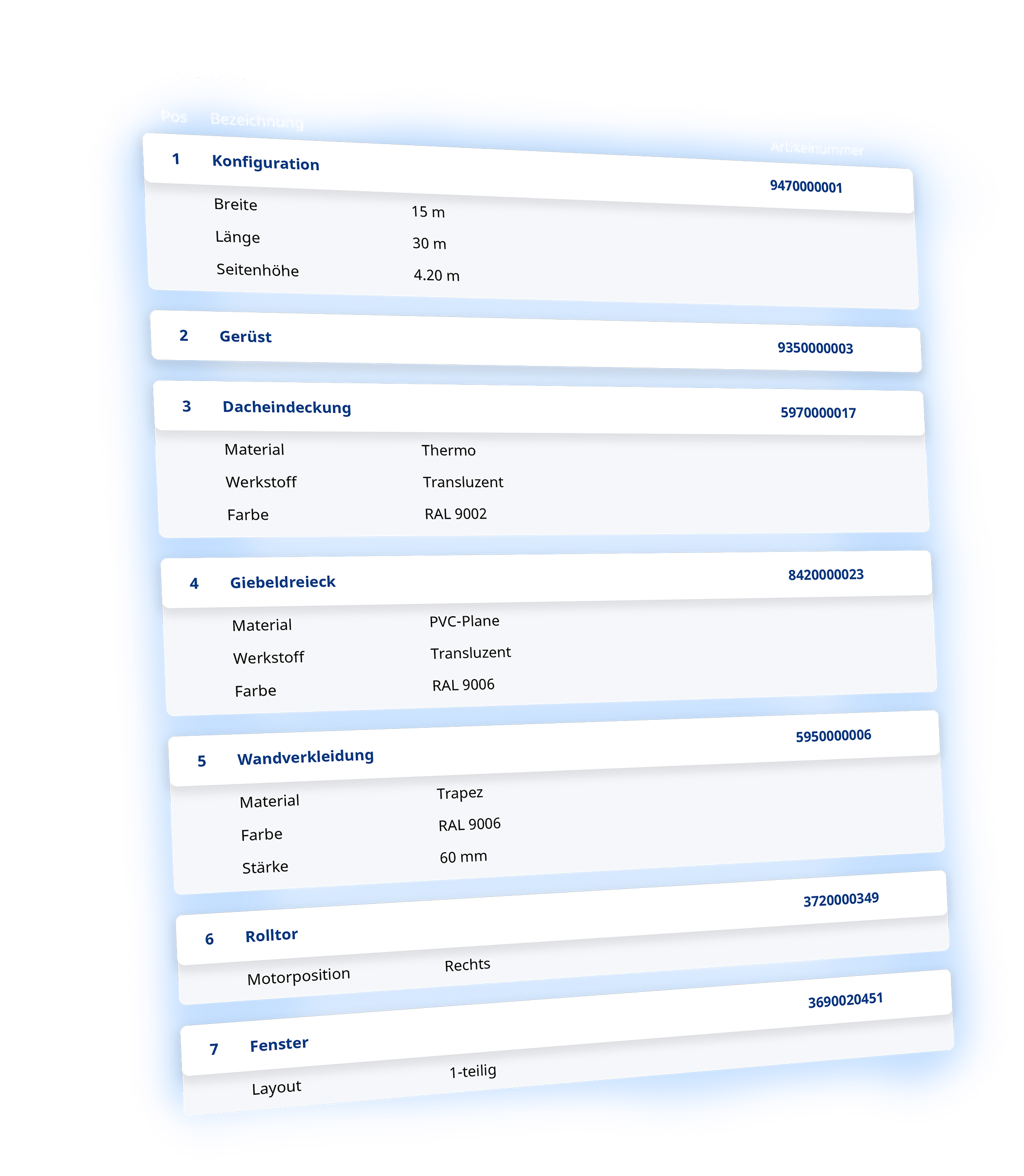
Bill of materials
For the calculators at HTS TENTIQ, the internal mode offers additional useful features. For example, all components of the configuration are provided in a detailed bill of materials, including the technical article numbers and various prices. Future prices can also be retrieved from the SAP system for comparison. In addition to the complete list of all items used in the configurator, targeted bills of materials for each individual configuration can also be downloaded as Excel files.
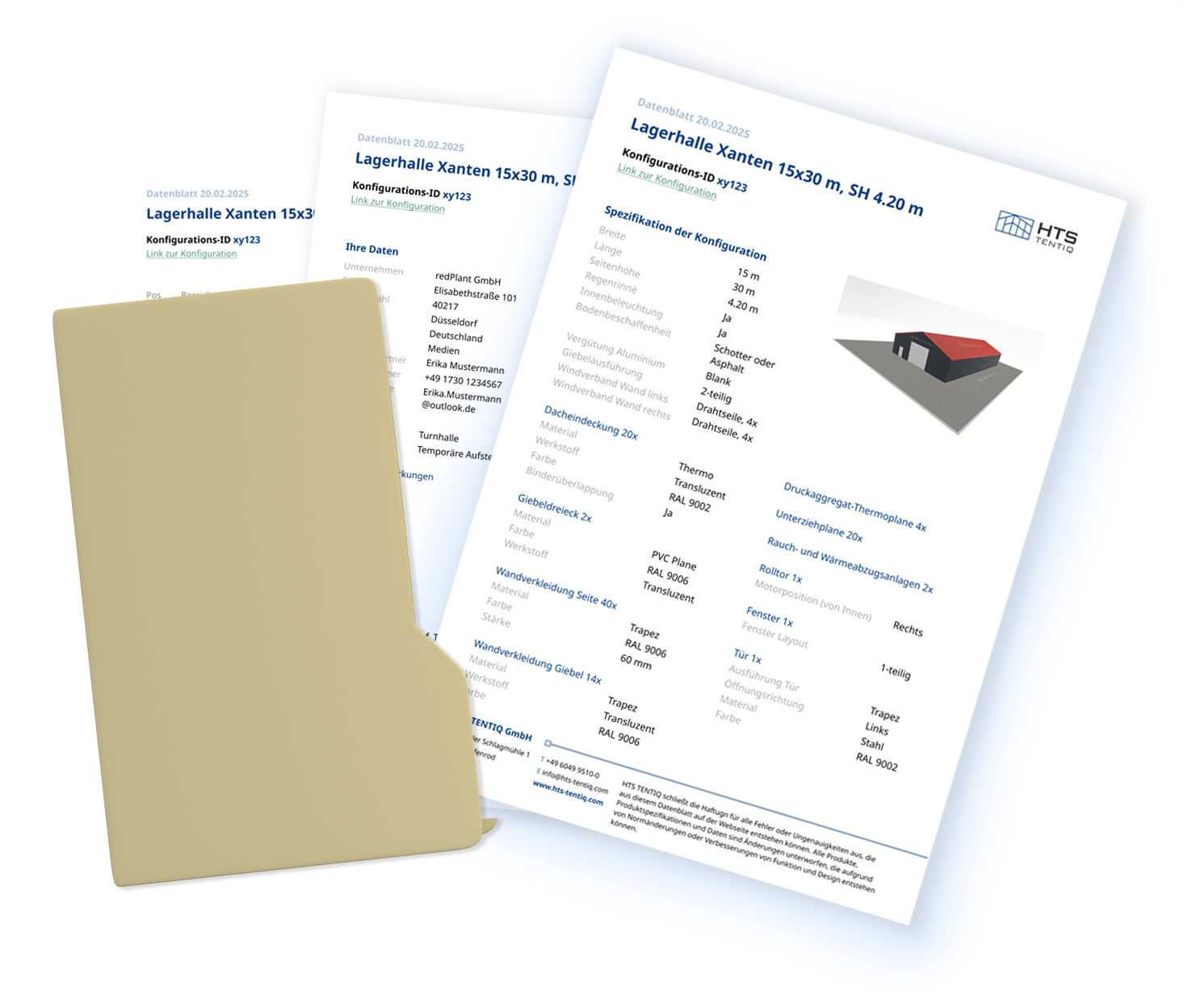
Data sheets
Additionally, HTS TENTIQ employees can download a data sheet as a PDF for each individual configuration via the internal area. This includes the unique ID and the corresponding link for retrieving the configuration, a rendering of the hall as a visual aid, a list of the selected configuration options, the total price, and further details regarding the usage and installation location of the customer. The data sheet serves as documentation and can be attached by HTS TENTIQ employees to offers or exchanged during customer consultations.
Seamlessly connected
Thanks to its connection to the internal systems at HTS TENTIQ, the 3D configurator can provide considerable support for operational processes. Not only does it break down the individual composition of the planning into the corresponding assemblies and associated articles and their prices through the data model, but it also independently generates specific identification numbers for the quotation and settlement process, which seamlessly integrate into HTS TENTIQ's existing processes by adhering to its own number range.

Click by click towards optimization
Every 3D configurator has its own individual structure of processes and design. In order to better evaluate this in terms of usability and user experience, an individual tracking concept was developed and integrated into the 3D configurator. By recording and analyzing user behavior, the 3D configurator can now be individually adapted to the user's wishes in order to provide him with even better support during configuration.
Looking to the future
Optimizing usability is not the only topic that should always be kept in mind; the integration of further building models is already on HTS TENTIQ's agenda. Thanks to the data-driven design, updates and new products can be integrated into the 3D configurator quickly and easily. Just check out our site or the 3D Configurator to find out as soon as new features or tents are available.
Features
WebGL
The 3D Configurator has been implemented in WebGL and is available in common browsers.
Responsive Design
The 3D configurator is available on smartphone, tablet to desktop.
Individual ID
Each configuration is assigned an ID and can be recalled at any time.
Data
The 3D configurator generates data that is directly processed in the internal processes.
Multilingual
The configurator is available in three languages and is waiting for the integration of Weiteren.
Validation
If it is configurable, it is producible. The configurator only allows valid configurations.
SAP
The SAP interface enables seamless transfer of requests to HTS systems.
Billions of possibilities
The HTS TENTIQ product range, including configuration logic, was integrated into the 3D Konfigurator
